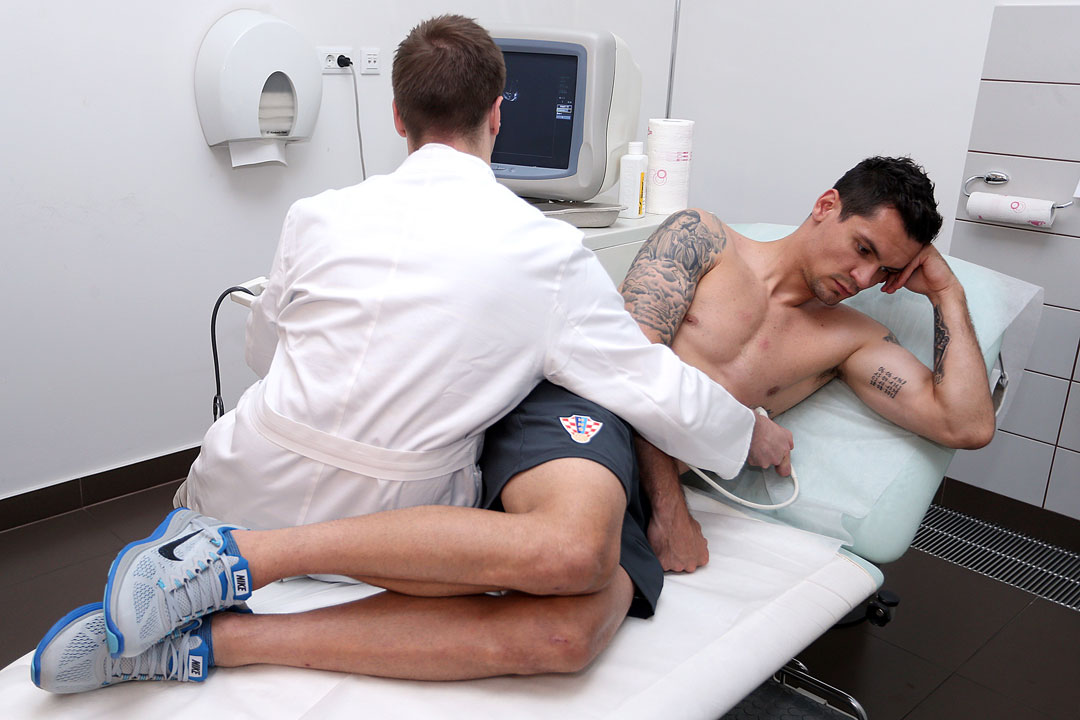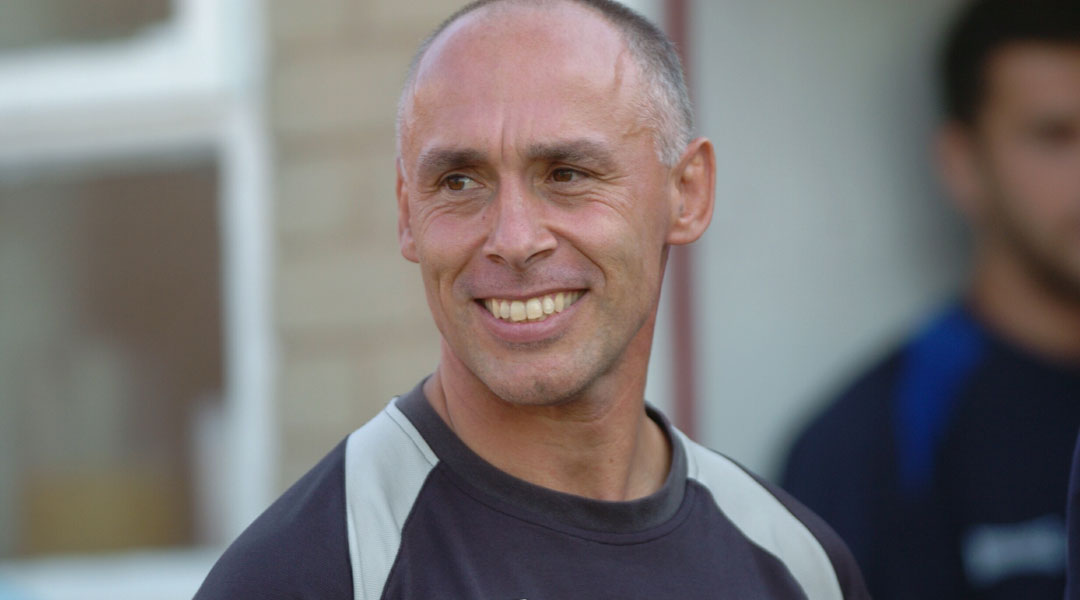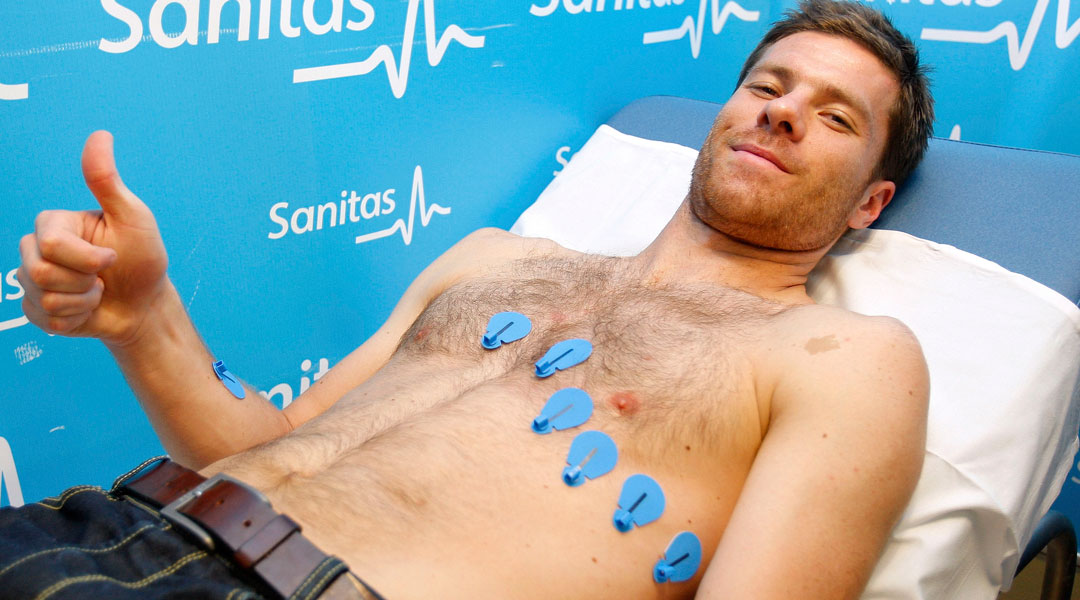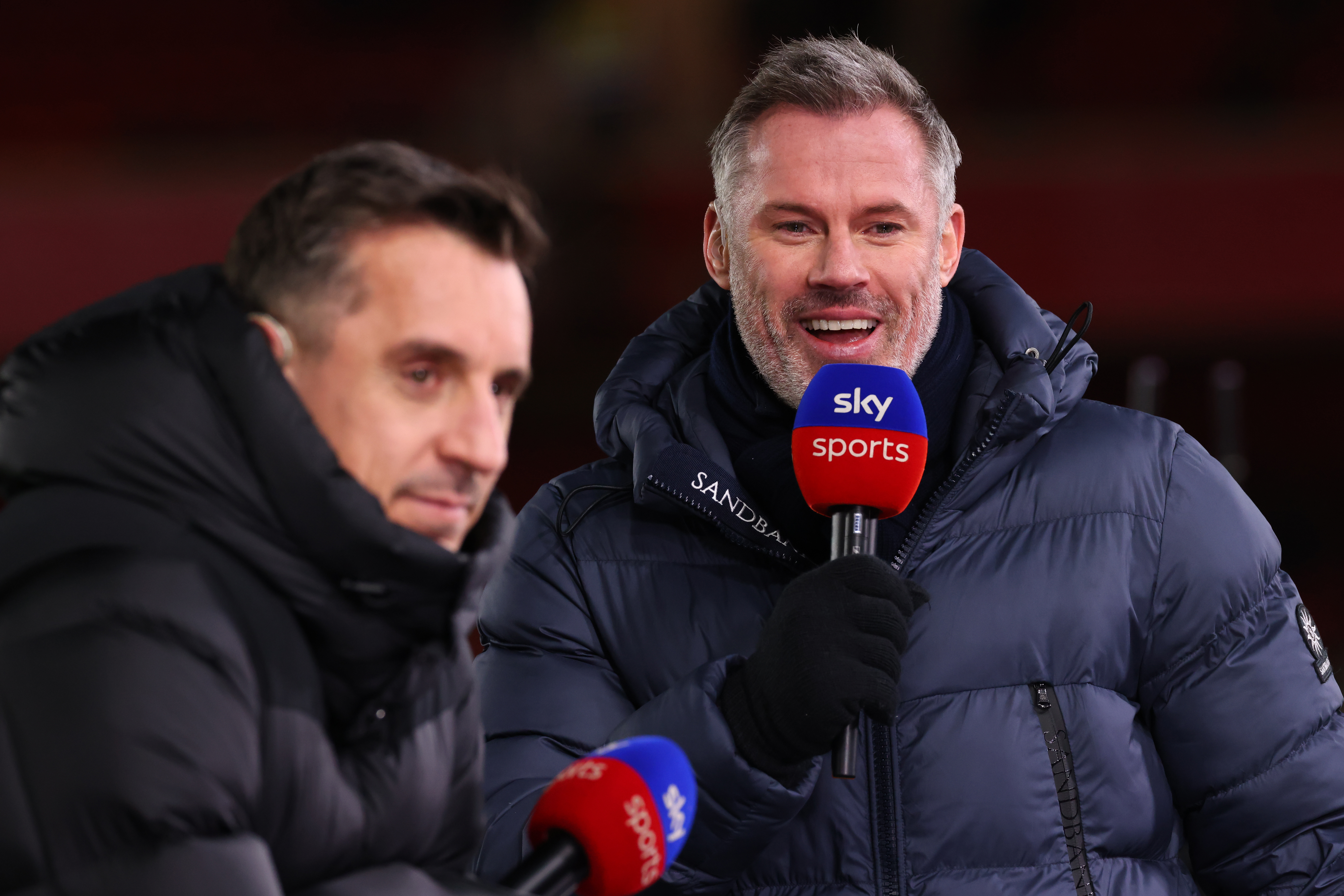What happens in a football medical? How to pass one, and why some players don't
Most players glide through them as transfer formality, but others can see their moves put in doubt. FourFourTwo finds out why...

Think a medical is a foregone conclusion? Think again. As we've seen before, a move isn't done until a player has passed a club's rigorous check-up with flying colours.
To find out more, FourFourTwo got the lowdown from Dave Fevre, formerly of Manchester United, Blackburn and Great Britain Rugby League, and a member of the Football Medical Association.
“I liken it to when you go out and buy a second-hand car – you can take a risk on it being OK based on what you see, or if you’re wise you'll invest after having an inspection from experts like the AA. When you look at the amount of money paid for players it’s really in the club’s benefit to ensure to the best of your ability that what you’re getting is in good working order.
“But just as every footballer is different, so too is every football medical. The requirements of the club, the brief from the manager, the age, position, medical and injury history of the player – all of these variables will change every time.
“There’s no standard medical as such – every club has its own way of doing things. Usually a player being transferred to a club will undergo a two-day medical, although when it comes to transfer deadline day, time isn’t always a luxury you can afford. But in both cases, the role of the team physiotherapist, club doctor and fitness team is to provide as much information to the manager and the club’s executives in order for them to make the final call.

Due diligence
“There are key elements that most medicals will feature. A health check to look for any cardio concerns is one of these; since Fabrice Muamba's heart attack, clubs are even more diligent about checking any heart irregularities. Players up to the age of 24 will ideally have annual checks to detect any heart-related issues.
“The timing of the transfer will influence things too. For the January window transfers, you’re usually looking at players who will need to hit the ground running – it’s rare that you’ll see a club sign a player with an existing injury at that time, although Arsenal did choose to do so with the loan signing of Kim Kallstrom. It’s not often that happens, but there may be relevant information involved in the deal that people outside the club are not party to.
Get FourFourTwo Newsletter
The best features, fun and footballing quizzes, straight to your inbox every week.
“You’ll look to sign players who have consistently played, and it's then up to you to provide the manager with an assessment of where they are physically and what additional work may be needed to get them up to full fitness. The club will use their own fitness checks for this; everything from body fat percentages to maximum VO2 testing, to gauge where the player is at and how far away they are from starting.
“Some clubs will include vision, hearing and dental checks during the medical. For example, during my time at Manchester United we worked with Professor Gail Stephenson (vision scientist at Liverpool University) in looking at many aspects of sport, exercise and vision.
“We also send players off to the dentist for check-ups to try to prevent any problems that can happen throughout the season, and the knock-on bio-mechanical effects that such issues can create.
Risk assessment
“The player’s skeletal range of movement – that's joints, key muscles, fitness and any possible weak spots – will be assessed. I’m especially keen on checking the pelvis as it’s such a key area for both upper and lower-body mobility, strength and injury prevention. The player’s position will influence the medical too – goalkeepers, for example, will have a check on shoulders, elbows, wrists and, of course, hands. If anything needs further investigation we’ll book a scan and get a more thorough assessment.

“It’s not just signings who undergo medicals, too. Academy players will have one when they move up to the senior squad to assess their development against first-team markers. Loan signings will also have a medical, which can work in several ways for the player and the club.
“Some loan signings will make permanent moves and often cite the care shown by the club that signs them as an influencing factor. So a thorough, professional check-up of a loan player not only ensures the club is getting a fully fit player but it also can impress a player to the point where they join for good.
“Players can fail a medical for any number of reasons – sometimes we’ll look at the assessment results and think, ‘we’re not sure they can go through 40-odd games in the Championship at the moment – we don’t want to take a risk on them’.
“That’s not the end of the story, and we'll still work with the player and their representatives so we can help them. Ultimately, the needs of the club, the strength of the squad, the time the player has to get up to full fitness or overcome an injury will dictate things. So while they may not sign for one club, they could pass for another.”
The tests
Playing the passing game: the key elements of a football medical...
Test 1: Heart and health
A club medical includes cardiac screening with an ECG, echo monitor and heart health history questionnaire; these may also feature blood tests and a fitness check. The club doctor may include a urine test to detect proteins or ketones that indicate health issues such as diabetes.
Test 2: Musculoskeletal stability
The physio team's in-depth look at possible weak spots like the lower lumbar (back) and pelvic region – areas where hamstring and adductor problems can originate from. They may also check for any defects in function or muscle tightness when performing straightforward moves by using drills such as squats, hop tests and lunges.
Test 3: Isokinetic issues
Focusing on muscles and movements (like the quads and hamstrings, for example), the physios can work out the ratios between the two muscle groups as they work together and identify weaknesses which may predispose injury or have developed post-injury. Knee flexion and extension drills are among those used to check the player’s movement.
Test 4: Deep scanning
In the event of a history of problems, the medical team will have a hospital on standby for a magnetic resonance or ultrasound scan. Scanning units can be used to assess the majority of muscles and joints in the human skeleton.
Test 5: Body fat score
Clubs may use Bioelectrical Impedance technology – a body fat monitor that sends an electrical signal through the body to measure lean tissue and fat. Most professional players are expected to be around the 10% body fat mark. Fat callipers are still used in many instances for reliability, as long as the same examiner is involved in any re-testing.
Test 6: Ergometric sprint test
Does what it says on the tin – measures a player’s speed over a set distance. A result of sub-three seconds for the 20m sprint test would be expected for outfield players in the Championship.
With thanks to the Football Medical Association (FMA) – the representative body for all medical, science and exercise personnel in professional league football, within the UK – for their assistance with this piece.
While you’re here, why not subscribe to the mag - and get every issue for less than £3.80 delivered to your door!
NOW READ...
IN THE MAG Season Preview 2020/21! EVERY team rated in our 196-page summer special
GUIDE Premier League live stream best VPN: how to watch every game from anywhere in the world
